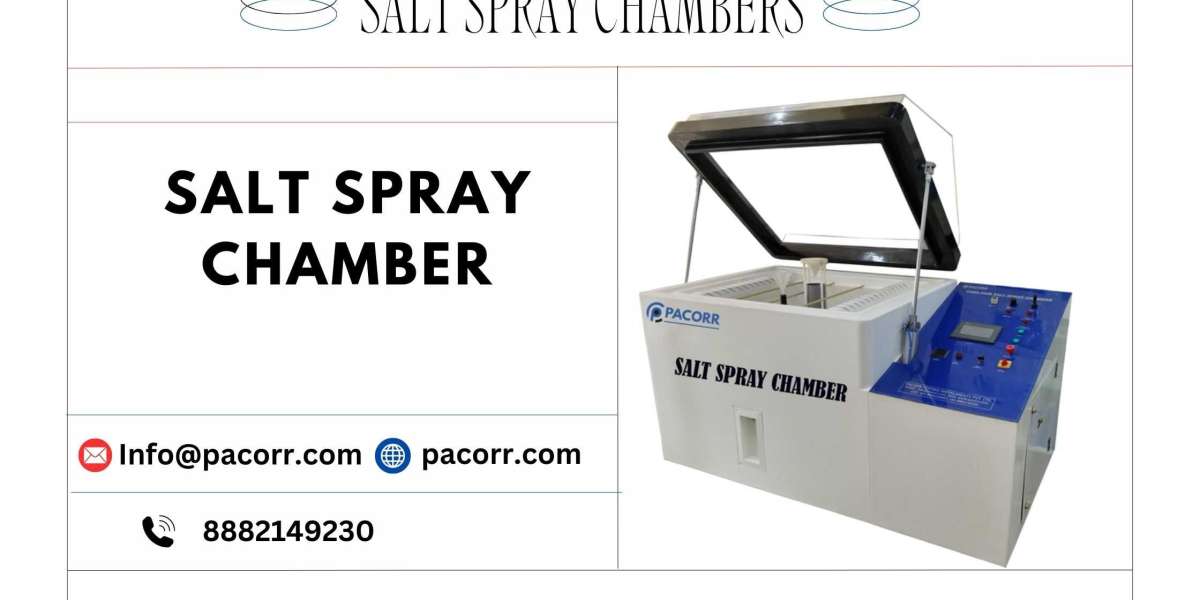This type of Salt Spray Chamber is crucial for manufacturers in sectors such as automotive, aerospace, marine, and electronics, where corrosion resistance is often a significant factor in product performance and longevity. In this guide, we will explore everything you need to know about salt spray chambers: their purpose, how they work, applications, and why they are vital for ensuring product durability.
What Is a Salt Spray Chamber?
A salt spray chamber, often referred to as a salt fog chamber, is a specialized testing device designed to simulate corrosive conditions. This equipment uses a fine mist of saline solution to mimic the effects of a coastal or marine environment, where salt-laden air can accelerate the corrosion process on metals and coatings. Salt Spray Test Chamber provide an accelerated method for testing the corrosion resistance of coatings, paints, electroplating, and metal materials. By exposing samples to these conditions in a controlled environment, manufacturers can gauge the long-term durability of materials in a shorter time frame.
How Does a Salt Spray Chamber Work?
Salt spray chambers operate by creating a controlled environment that produces a consistent mist or fog of saline solution. Here’s a closer look at the key components and process involved:
- Salt Solution Preparation: A saline solution, usually consisting of sodium chloride dissolved in distilled water, is prepared to the required concentration. Standard salt spray tests often use a 5% salt solution, though this can vary depending on the testing requirements.
- Misting Mechanism: The saline solution is then atomized using compressed air to create a fine mist. This mist is introduced into the chamber, enveloping the test specimens uniformly.
- Temperature Control: The chamber is typically heated to maintain a stable temperature, often around 35°C (95°F), ensuring consistent test conditions.
- Duration of Exposure: The samples are exposed to the salt mist for a specified period, which can range from hours to days or even weeks, depending on the material and the standard being used.
- Observation and Analysis: After exposure, samples are analyzed for any signs of corrosion, such as rust, pitting, or coating degradation. This data is used to determine the material’s or coating's durability and effectiveness in corrosive conditions.
Applications of Salt Spray Testing
Salt spray chambers are used across a wide range of industries where materials are subject to corrosion risks. Here are some key applications:
- Automotive Industry: Car manufacturers use salt spray chambers to test components like frames, body panels, and fasteners. The Salt Spray Chamber Price reveals how well these parts resist corrosion, which is essential for vehicle longevity and safety.
- Aerospace and Defense: Aircraft and defense equipment are often exposed to extreme weather and environmental conditions. Salt spray testing is essential for evaluating materials used in aircraft fuselages, frames, and even sensitive electronic components.
- Marine Industry: Marine environments are highly corrosive, particularly due to saltwater exposure. Marine-grade materials must withstand constant exposure to salt. Salt spray chambers enable manufacturers to simulate marine conditions and test materials like stainless steel, aluminum, and special coatings.
- Electronics: Corrosion can affect the performance of electronic devices, especially in coastal or humid environments. Salt spray testing helps ensure that protective coatings and materials used in electronics can prevent corrosion, improving the lifespan and reliability of the devices.
- Construction and Building Materials: Structural elements, fasteners, and fittings exposed to outdoor conditions need to resist rust and corrosion. Salt Spray Chambers helps manufacturers assess the longevity of these materials, ensuring safe and durable construction products.
Types of Salt Spray Tests and Standards
Salt spray tests vary based on industry standards and requirements, providing different levels of environmental exposure. Some of the widely used salt spray test standards include:
- ASTM B117: One of the most common salt spray test methods, ASTM B117 specifies the basic requirements for the salt spray test. This standard covers the apparatus, solutions, testing duration, and evaluation methods.
- ISO 9227: This international standard outlines procedures for salt spray testing in various conditions, including neutral salt spray (NSS), acetic acid salt spray (AASS), and copper-accelerated acetic acid salt spray (CASS) testing.
- JIS Z 2371: The Japanese Industrial Standard (JIS) for salt spray testing specifies the requirements for testing protective coatings and metallic materials in corrosive conditions.
Each standard provides specific protocols for testing, making it easier for industries to adhere to their unique requirements for corrosion resistance evaluation.
Benefits of Using a Salt Spray Chamber
- Accelerated Testing: Salt spray chambers allow manufacturers to simulate years of exposure within a matter of days or weeks. This quick testing cycle speeds up product development and quality assurance processes.
- Improved Product Quality: By identifying potential weaknesses in coatings, materials, or designs, companies can enhance the quality and durability of their products. This results in better performance in real-world conditions.
- Cost-Effective: Identifying corrosion issues early in the design and manufacturing stages prevents costly failures and product recalls down the line. Salt spray testing helps in making informed material choices and improving coating formulations.
- Compliance with Industry Standards: Salt spray testing ensures that products meet regulatory standards for corrosion resistance, which is crucial for entering international markets and ensuring consumer safety.
Choosing the Right Salt Spray Chamber for Your Needs
When selecting a salt spray chamber, it’s essential to consider the following factors:
- Chamber Size: Depending on the sample size and the number of items to be tested, salt spray chambers are available in various capacities. Large samples or multiple samples may require a bigger chamber.
- Testing Standards: Different industries have unique testing standards, so it’s crucial to choose a chamber that complies with the standards required for your specific industry, whether it’s ASTM, ISO, or JIS.
- Control Options: Advanced salt spray chambers offer precise control over testing parameters like temperature, humidity, and mist concentration. These features ensure more accurate and consistent results.
- Additional Testing Capabilities: Some chambers are designed to perform additional environmental tests, such as cyclic corrosion testing. This feature is beneficial for industries that require varied testing conditions beyond salt spray exposure.
Interpreting Salt Spray Test Results
The outcomes of a salt spray test depend on the material being tested and the duration of exposure. Generally, manufacturers look for signs of:
- Red Rust: Indicates corrosion of base metal, particularly in steel samples.
- White Rust: Seen on galvanized or zinc-coated samples, white rust indicates the degradation of the protective zinc layer.
- Pitting: Indicates localized corrosion, often a sign of material vulnerability.
- Coating Degradation: Paints and coatings may blister, peel, or fade if they are not resistant to salt spray.
Each of these results offers insights into material durability, helping manufacturers refine their products or materials.
Future Trends in Salt Spray Testing
As technology advances, salt spray testing is evolving as well. Here are some trends shaping the future of salt spray testing:
- Automated Testing Systems: New chambers come with advanced automation features, allowing for minimal human intervention and increased accuracy.
- Environmental Considerations: As industries move toward sustainability, salt spray testing now incorporates eco-friendly practices by using less corrosive solutions and minimizing waste.
- AI and Data Analytics: Some modern chambers are equipped with AI and data analytics capabilities that allow for more detailed insights into corrosion patterns and predictive maintenance for materials.
- Cyclic Corrosion Testing: While traditional salt spray tests provide valuable insights, cyclic corrosion testing simulates fluctuating environmental conditions, which more closely represent real-world situations.
Conclusion
Salt spray chambers are invaluable tools for industries focused on durability and corrosion resistance. By enabling accelerated corrosion testing, they allow manufacturers to assess the longevity and reliability of their products effectively. With a better understanding of how salt spray chambers work, the testing standards available, and the industries that benefit from them, manufacturers can ensure that their products meet the highest quality and safety standards.
When it comes to corrosion testing, investing in a reliable salt spray chamber is not just about compliance; it's about creating products that can stand the test of time, no matter the conditions. Whether you’re in the automotive, marine, aerospace, or electronics industry, salt spray testing will continue to play a crucial role in advancing the field of material durability and enhancing product performance in corrosive environments.
For the best selection of high-quality salt spray chambers, check out Pacorr.com and find the right solution tailored to your industry’s specific needs.



